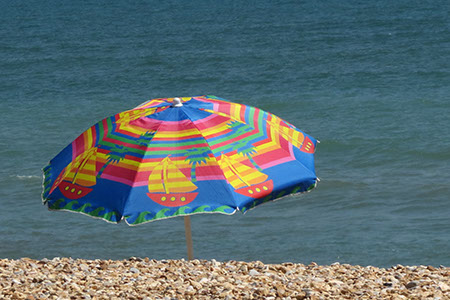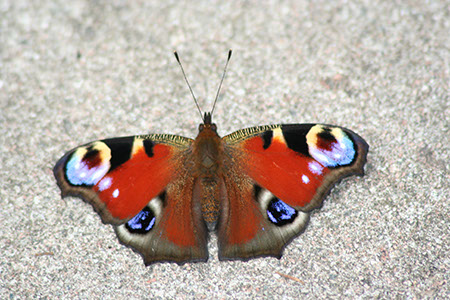VEDA News
Powered by VEDAA Legacy of Leadership and Philanthropy The Vestibular Disorders Association (VeDA) is privileged to count among its most steadfast champions Dr. P. Ashley Wackym, a globally recognized neurotologist, past Chair of VeDA’s Medical Advisory Board, and long-time Trustee. Each November, Dr. Wackym has demonstrated his deep commitment to VeDA’s mission through a generous Giving Tuesday gift—an investment that has helped sustain vital patient education, advocacy, and research initiatives for the vestibular community. A Distinguished Career in Neurotology Dr. Wackym is an internationally respected surgeon, researcher, and educator whose career has been dedicated to advancing the understanding and treatment of vestibular disorders. He has authored hundreds of peer-reviewed publications and contributed to groundbreaking work in the diagnosis and surgical management of balance disorders, hearing loss, and skull base pathology. As a leader in his field, Dr. Wackym has trained countless physicians and researchers, ensuring that the next generation of clinicians is […]
The post Honoring Dr. P. Ashley Wackym appeared first on Vestibular Disorders Association.
VEDA - Published Wed Nov 12 2025 15:00 View Full Story...
Article Summary Research on diet and vestibular disorders is limited, but many people with Ménière’s disease, secondary endolymphatic hydrops, and vestibular migraines find that changing their diets helps manage their symptoms. These changes might involve adjusting the types or timing of foods they eat. Changes in Your Diet Can Reduce Dizziness Some individuals with Ménière’s disease (also called primary idiopathic endolymphatic hydrops), secondary endolymphatic hydrops, or vestibular migraine notice that dietary changes help, while others may not find any benefits. Since everyone is different, it’s important to find what works best for you. There is not much research, so more studies are needed to clearly understand how diet affects these disorders. Even if certain foods don’t trigger your symptoms, a healthy diet is important for everyone. It can help prevent other health problems, like heart disease and diabetes. A good starting point is to follow national nutrition guidelines, which suggest […]
The post Dietary Considerations with SEH, Meniere’s Disease & Vestibular Migraine – What You Need to Know appeared first on Vestibular Disorders Association.
VEDA - Published Sat Nov 8 2025 02:39 View Full Story...
Article Summary Benign Paroxysmal Positional Vertigo (BPPV) is the most common reason people feel dizzy, specifically a spinning feeling called vertigo. It happens when tiny crystals in the inner ear, called otoconia, get loose and move into the wrong part of the ear. This can make you feel dizzy when you change positions or move your head. What Happens During a BPPV Episode? BPPV is the most common vestibular disorder. BPPV is not dangerous, but it can be annoying. Here’s what it means: Benign: It’s not life-threatening. Paroxysmal: It comes in sudden and brief episodes. Positional: It happens with certain head movements. Vertigo: A false sense of spinning or moving. During a BPPV episode, the loose crystals move with gravity, causing fluid in the ear to move when it normally wouldn’t. This confuses the brain and makes you feel like you’re spinning, even when you’re not. These dizzy spells usually […]
The post Benign Paroxysmal Positional Vertigo (BPPV) – What You Need to Know appeared first on Vestibular Disorders Association.
VEDA - Published Sat Nov 8 2025 02:11 View Full Story...
Article Summary During vestibular rehabilitation therapy (VRT), doing exercises at home is important. A physical therapist (PT) or occupational therapist (OT) will create a personalized exercise plan for you. It’s not recommended to do these exercises without a diagnosis and plan from a vestibular expert. Remember to check with a doctor before starting these exercises to make sure they’re right for you! These exercises can be helpful, but they don’t work for everyone. These exercises can take time to kick in and might make your balance or dizziness feel worse at first. The Vestibular Disorders Association is not responsible for any results from doing these exercises. Can balance retraining exercises help with dizziness? Balance retraining is a type of therapy that can help you feel better if you’re dealing with long-lasting dizziness. However, it’s important to know the difference between two types of dizziness: Vertigo is a strong spinning feeling […]
The post Home-based Exercise – What You Need to Know appeared first on Vestibular Disorders Association.
VEDA - Published Sat Nov 8 2025 01:59 View Full Story...
Overview This study examines how dizziness impacts people’s everyday lives, affecting their physical, emotional, cognitive, and social well-being. Although dizziness is a common symptom that sends millions of people to the doctor each year, healthcare providers often lack tools that fully capture the extent to which it disrupts daily life. To bridge that gap, researchers from the University of Michigan and its partner institutions interviewed adults living with various types of dizziness to build a more comprehensive picture of its real-world impact. Why This Matters Approximately 15% of U.S. adults experience dizziness each year, and the incidence increases with age. Yet the questionnaires most often used in clinics (like the Dizziness Handicap Inventory) focus mainly on physical symptoms, missing emotional, cognitive, and social aspects. The researchers’ goal was to design a framework that reflects the full experience of dizziness—something that could later form the basis for a new “patient-reported outcome” […]
The post Dizziness and Its Effect on Health-Related Quality of Life appeared first on Vestibular Disorders Association.
VEDA - Published Wed Nov 5 2025 16:53 View Full Story...
What the study is about Our balance depends on tiny “hair cells” inside the inner ear that sense motion. Certain medicines and chemicals—called ototoxic substances—can damage or kill these hair cells, causing dizziness or balance problems that often persist. Scientists wanted to know what happens before the hair cells die: do they show early signs of stress that could help us spot damage sooner? How the study was done Researchers examined the genes that are turned on or off in the inner-ear balance organs of rats and mice exposed to two different ototoxic substances: an antibiotic (streptomycin) and a chemical (IDPN). They collected tissue samples after various exposure times and compared them with those of healthy animals. Using genetic analysis (RNA sequencing), they measured which genes changed activity. What they found The first change they observed was that genes normally active in healthy hair cells began to shut down prematurely, […]
The post Research: Before the Balance Cells Die: Early Clues to Inner Ear Damage appeared first on Vestibular Disorders Association.
VEDA - Published Mon Nov 3 2025 18:26 View Full Story...
Earlier this month, VeDA Executive Director Cynthia Ryan attended the National Organization for Rare Disorders (NORD) Breakthrough Summit in Washington, D.C., where nonprofit, research, and advocacy leaders gathered to advance the voice of patients living with rare diseases. Throughout the event, Cynthia promoted vestibular awareness—helping fellow advocates and healthcare professionals recognize how balance disorders intersect with the broader rare disease community. She also participated in sessions focused on patient registries, data sharing, and healthcare advocacy, learning how collaborative approaches can accelerate research and improve access to care for people living with rare and often misunderstood conditions. Executive Insights: Balancing Vision, Resources, and Well-Being Cynthia was honored to serve on an Executive Director Insights Panel alongside Rhonda Rowland (Wilson Disease Association) and Ryan Maple (Global Foundation for Peroxisomal Disorders). The discussion, “Balancing Vision, Resources, and Well-Being,” explored how nonprofit leaders sustain impact while supporting their teams and avoiding burnout. Drawing from […]
The post VeDA’s Executive Director Joins Rare Disease Leaders at NORD Annual Conference appeared first on Vestibular Disorders Association.
VEDA - Published Sat Nov 1 2025 01:37 View Full Story...
If you’re living with dizziness, vertigo, or imbalance, you may already know that VeDA’s website is packed with trustworthy information to help you understand your symptoms, find a healthcare provider, and discover ways to cope and recover. But when brain fog or overwhelm make it hard to know where to start, we’ve got you covered. VeDA Executive Director Cynthia Ryan has created a new series of 8 short videos that walk you through the main sections of the VeDA website, step by step. Beginning with the home page, Cynthia shows you how to navigate key pages like Diagnosis & Treatment, Coping & Support, For Professionals, and more — helping you quickly find the resources that matter most to you. Whether you’re newly diagnosed or seeking a deeper understanding, these guided tours will make it easier to explore VeDA’s educational tools, patient stories, and ways to connect with our community. Watch […]
The post Find Your Way Around VeDA’s Website with Our New Video Guide Series appeared first on Vestibular Disorders Association.
VEDA - Published Tue Oct 28 2025 23:43 View Full Story...
Vestibular disorders can cause symptoms like dizziness, vertigo (a spinning feeling), and trouble balancing. Other symptoms might include feeling sick to your stomach (nausea), ringing in the ears (tinnitus), hearing problems, and having difficulty thinking clearly (brain fog). This article can help you talk about these symptoms with your doctor. The vestibular system, which is located in the inner ear and brain, helps us maintain balance and coordinate our eye movements. If this system gets damaged from illness, aging, or injury, it can lead to various symptoms, including: Dizziness: Feeling lightheaded, faint, or disoriented. Imbalance: Feeling unbalanced or like you’re about to tip over or fall. Vertigo: A spinning sensation, making you feel like you or your surroundings are moving. Brain Fog: Difficulty thinking, concentrating, or remembering basic things. Tinnitus: The sense that you can hear a noise, such as ringing or buzzing, when there is no external sound. Hearing […]
The post Vestibular Symptoms – What You Need to Know appeared first on Vestibular Disorders Association.
VEDA - Published Sat Oct 25 2025 00:40 View Full Story...
Summary Enlarged Vestibular Aqueduct (EVA) is a condition that affects the inner ear, leading to hearing loss and balance problems. It is the most common inner ear issue linked to hearing loss, and doctors usually find it using a CT scan. While hearing loss is common, balance issues are less frequently seen. There is no cure for EVA, but getting diagnosed early and avoiding further head injuries is important. What is EVA? The vestibular aqueduct is a small, tube-like passage in the inner ear that connects to the brain. It’s protected by the temporal bone, which also contains two important parts of the ear: the cochlea, which helps us hear, and the vestibular labyrinth, which helps us maintain balance. Inside the vestibular aqueduct is the endolymphatic duct, a tube that carries fluid essential for hearing and balance. Although we don’t fully understand how it works, this system is crucial for […]
The post Enlarged Vestibular Aqueduct (EVA) – What You Need to Know appeared first on Vestibular Disorders Association.
VEDA - Published Sat Oct 18 2025 00:19 View Full Story...









